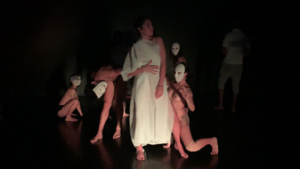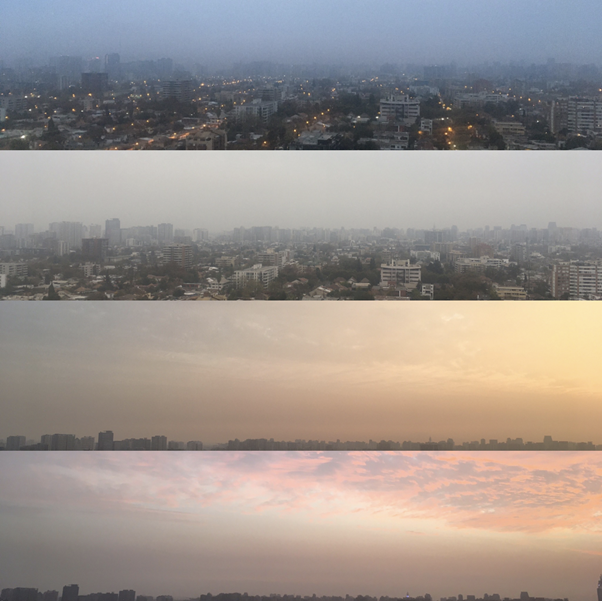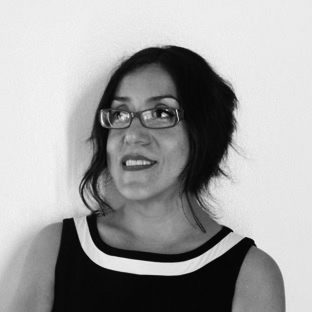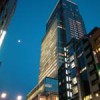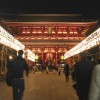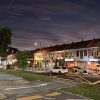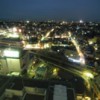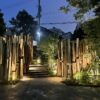Paulina Villalobos
Lighting Designer
Santiago
Being part of the lighting detectives family, first as a student in Belgrade, Serbia (2008) and later as core member in Mexico 2015, has become an amazing cultural adventure of night and day light. During the workshops we use language to communicate our perception, thoughts and feelings of light in each one of our own languages. But as much as I experienced different cultures, the boundaries to express, understand and perceive “everything” expands and at the same time questions the limits of language.
Language helps us to design reality.
When the Greek philosophers started to define concepts far beyond what we could see, the language grew from the sound to define an object or food to describe an idea like philosophy, aesthetics, metaphysics, democracy and so on. With these new words they expand thoughts, communication and also perception of reality.
In ancient Greece there were no words to describe all colours like we have now, just some few basic colours were enough to live, enjoy and talk about complex philosophy. Blue was not part of them, they did not need it. Hence, they did not see it.
The evolution of language since long ago made the blue possible in all contemporary languages. Now if we speak about light we can not imagine our thoughts without the blue concept to describe our environment, but the reality or our environment had changed so fast in the last decades that we have some “greek blues” or missing concepts to think, perceive, describe and design our environment.
To describe light and lighting perception the present words are not enough, because concepts exist when we need them to exist, when we need a new word to describe a new something.
In this text I have the audacity to propose new words that I think we are missing to express in a better way the possibilities of light to design a better future, some of the words are borrowed from the few languages I know (a little) and some are brand new (but also borrowed ).

- Utsuroi, a word for dynamic light and colour changes.
- Lagom, the good enough lighting levels to see at night.
- Griste, Grayish and diffuse gloomy perception of light.
- Nectric, Polluted perception of nocturnal light glow.
- Blansible, (or Whitessible) the perception of all possible white light or a Correlated Colour Temperature concept related to visual perception.
1-Utsuroi (Japanese)
If we talk about light there is not a simple translation for utsuroi, the perception of soft transition changes of the light. It means you need time and patience to perceive the dynamic of the lighting motion, colour or intensity.
In the era of LED control dynamic sequence programming we need that word!
There is no concept for timing something in-between On/Off and the RGB dynamic change that desperately covers all the colour lighting spectrum or the 6 basic ones in a time frame as long as a blink of an eye. A vulgar show off of everything fast.
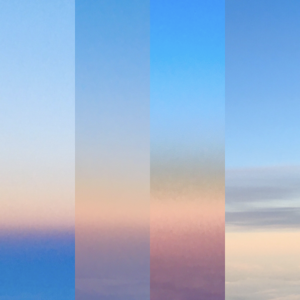
What about the soft and elegant changes perceived with patience? We need Utsuroi to describe the light in motion in this space in-between. The elegance of nature.
If words express the concepts of a culture, maybe that’s the reason for the appreciation of season changes in Japanese fine arts and soft shadows and shades in their vernacular architecture like in no other culture I know.
2-Lagom (Swedish)
I spent a year studying in the beautiful city of Stockholm and around Scandinavia. Fantastic place with soft interior light, the ultimate dimming culture where candle light is a “must” everywhere. Hence, general lighting at night can’t overwhelm the space, otherwise the humble light of the candle flame is meaningless.
There, the candle light is the secret reference for nocturnal lighting perception. Is neither too much nor too little (Lagom). Why do we need to use more and more if that is good enough? “The bigger the better” is the cultural antonyms of the ecological concept of the “good enough”.
Applying this concept to light, the dimming candle lighting levels for the night, the right one, is good enough because you can see the faces, food and the surroundings perfectly well. The ugly truth of the details – like black-spots and wrinkles in high definition of faces or mistakes, dirt and unfinished details of architectural spaces – are a sun lighting-level business, we have the day light for that, the night allows us to conceal reality and magic moments.
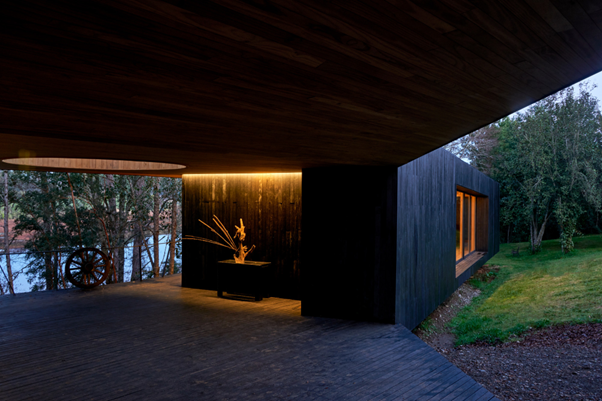
Paulina Villalobos
So I think we need that word in our international lighting design vocabulary for a concept missing: The good enough lighting levels for the visual perception during the night.
Now with the 2 words we manage to talk about the light at night are not good enough: Light and Darkness is like On or Off …and nothing in between. With those 2 totalitarian meanings to describe lighting levels for the city at night we have develop a nocturnal lighting disaster:
ON, Total, full, excessive, intrusive and glary light, and to prevent light pollution we have to promote:
OFF – darkness – when is not darkness what we want, we want lagom!

A word to speak about design instead of Photopic, Scotopic, Mesopic, which are complicated concepts when we want to communicate mood, feeling and perception.
For many years I looked for words to express the sadness of lighting conditions and recently I found one in a book called “Umami” invented by the Mexican author Laia Jufresa, to be fair I found 2, griste and néctrico.
3- Griste (Spanish, Gris + Triste)
A little bit gray, a little bit sad.
Light is not always happy, lately we have discovered that some lighting schemes are not always good and neither pleasant, can also be polluted, glare and comfortless. Like the efficient electric cool light with poor colour rendering, colour-less, joyful-less, griste.
So, there is no word for the perception of miserable poor color rendering and we need one!
4- Nectric. (Néctrico or Néctrica in Spanish)
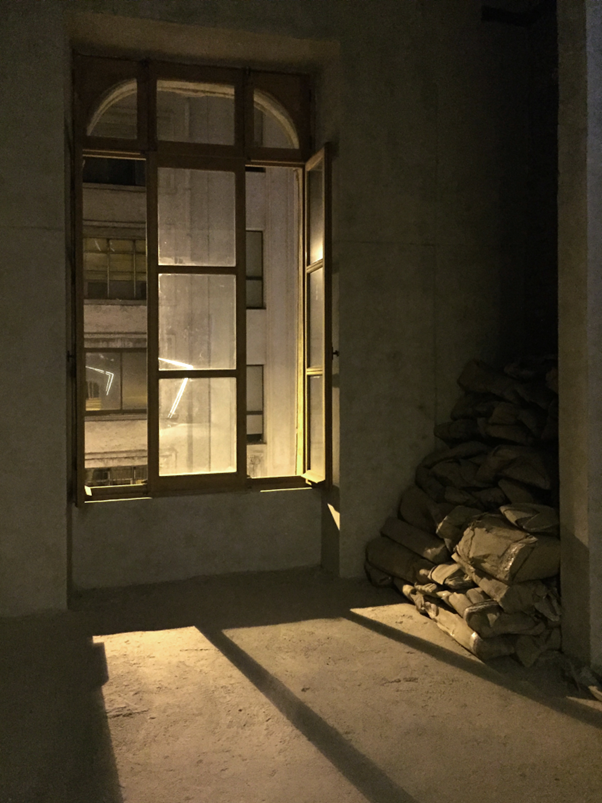
Picture by Marcela Acuña.
It is a combination between nocturnal and electric.
With this world we can imagine the perception of the polluted night of dense air, a constant electric buzz and an over lit sky of a megapolis.
During the last century the visual perception of the night changed dramatically, our ancestors probably had clear and clean nights but most of us lived in cities where nights are never dark but with a permanent sky glow, and in this case glow has not a shining positive meaning but a synonym of pollution and irresponsible energy waste.
Night has an electric glow, like in all the movies, mangas and comics about the apocalyptic future, where the upcoming years will not be in a happy place, is a dystopia with diffuse lighting and dirty atmospheric glowing sky day and night. Sadly it is the real nocturnal sky for most of our cities.
To finish with a positive word I will drop the last proposal to express light.
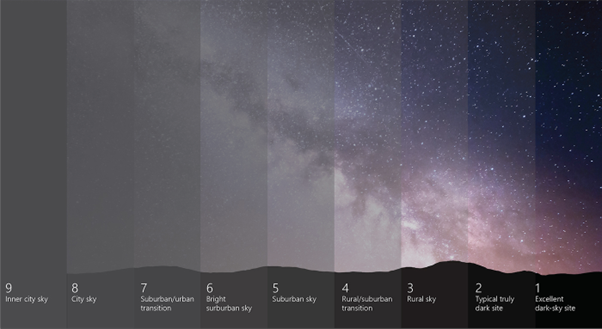
5- Blansible
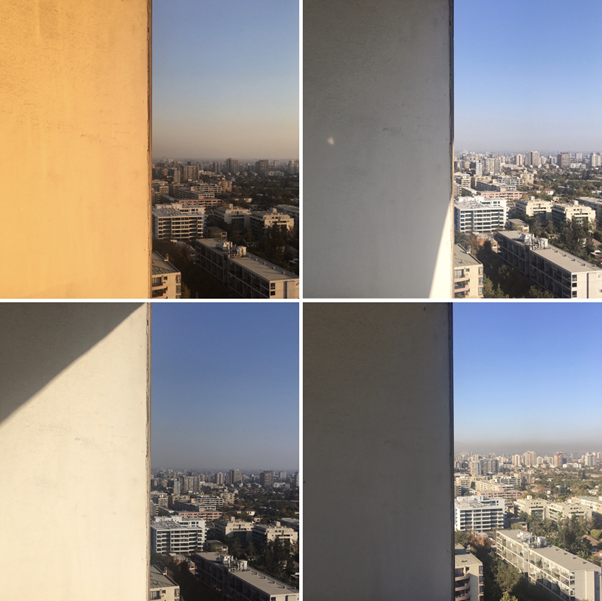
Spanish Blanco (White)+ Posible (Possible) or Whitessible
The endless possibilities of white light over a white surface.
For design and visual perception I think Blansible is a better concept than CCT “Correlated Colour Temperature”, because when we design with whites we are not talking about “real temperature” or “real colour” but the possibilities of white, mood and the sensible perception of the light over a minimalistic surface. The not-colour: white.
The author of Umami conceived a new word describing the sense of belonging but I will export blansible to the lighting design vocabulary, because I think it is perfect to fulfill a concept missing to express all the possibilities of the white light perception in design.
In the book she was telling the sensation of Marina, one of the characters, when she saw for the first time the interior light of her future house – Amargo – and when the window cut the sunlight over a white wall she had the certainty of her possibilities; that’s the missing word! the real CCT or the countless possibilities of the glowing daylight over a flat white surface.
Fabulous word that can also be translated.
Blansible, in Spanish (de todos los blancos posibles).
Whitessilbe, in English (white + possible).
Weisskeit, even in German, why not? Weiss + möglichkeit (my favorite word in German btw).
Paulina Villalobos
Lighting Designer
Santiago
Director of DIAV Lighting, an office dedicated to architectural and urban lighting design projects, light art installations and research in relation to light efficiency. Based in Santiago, Chile.






